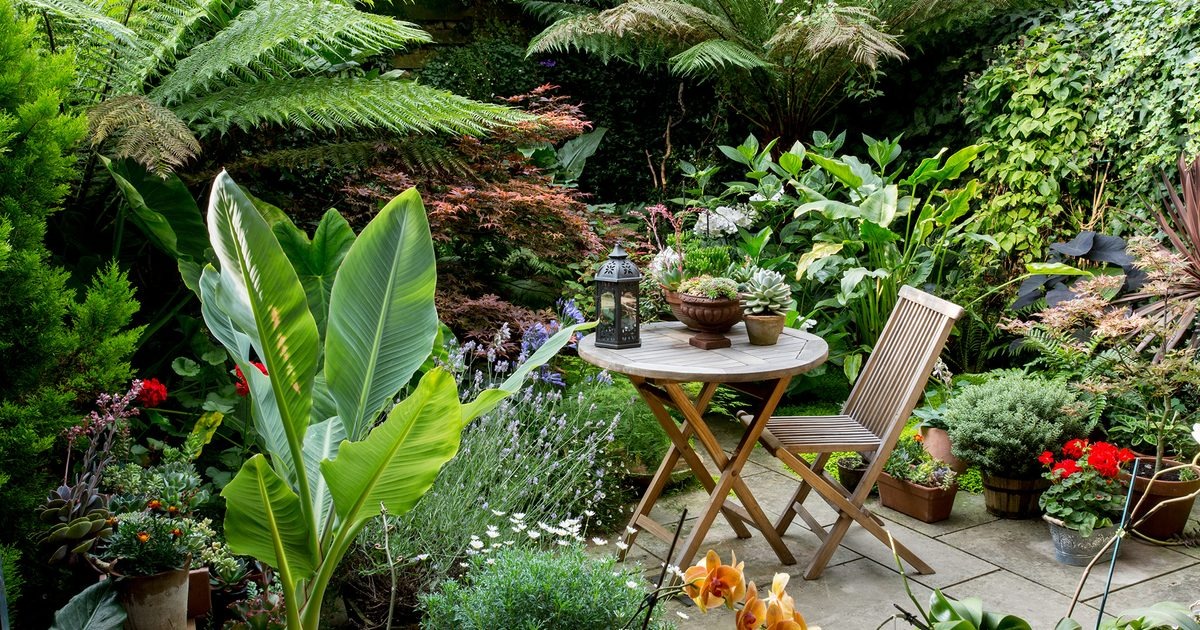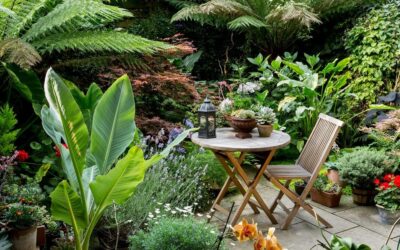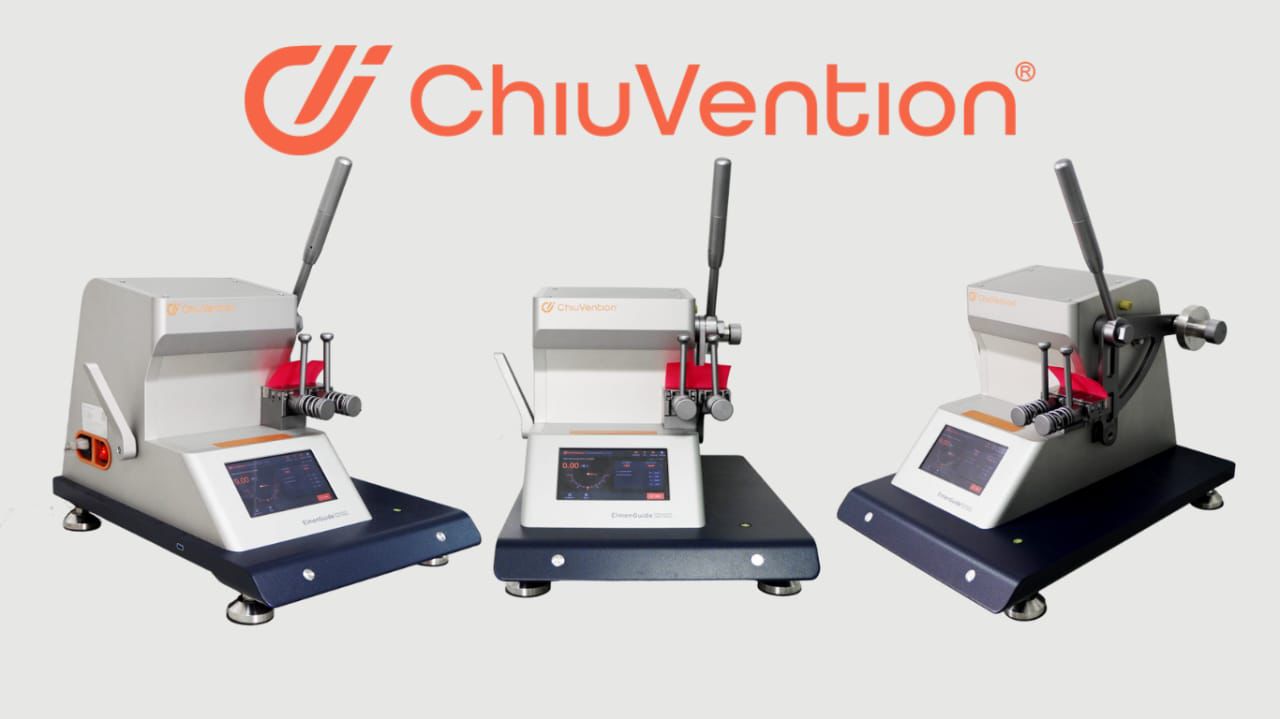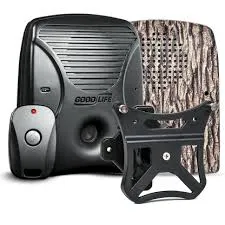Five Best Rootstocks For Tiny Gardens

Small gardens are increasingly common in the UK, where urban living and limited outdoor space challenge gardeners to grow their own food. Fruit trees, despite their traditional association with sprawling orchards, can thrive in compact spaces when grafted onto the right rootstock. Rootstocks control a tree’s size, vigour, and fruiting potential, making them critical for success in tiny gardens, patios, or even containers. This article explores the five best rootstocks for small-scale fruit tree cultivation, focusing on their suitability for UK conditions, compatibility with popular fruit varieties, and practical benefits for gardeners with limited space. It also incorporates expert advice from a leading UK nursery to guide your choices.
A specialist from Chris Bowers, a nursery with over 30 years of experience in cultivating fruit trees for sale, recommends selecting dwarfing rootstocks for small gardens to ensure manageable tree sizes and early fruit production. They advise, “For tiny gardens, dwarf rootstocks like M27 for apples or Gisela 5 for cherries are ideal, as they keep trees compact while maintaining high yields. Always choose from a reputable supplier to ensure quality and disease-free stock.” This insight underscores the importance of matching rootstocks to your garden’s constraints and the need for reliable sourcing.
Rootstocks and Their Role
Rootstocks are the root systems onto which fruit tree varieties are grafted. They determine the tree’s ultimate size, growth rate, and adaptability to soil and climate conditions. In small gardens, dwarfing rootstocks are essential because they restrict tree growth, making them suitable for confined spaces or container growing. Unlike standard rootstocks, which can produce trees exceeding 4.5 metres, dwarfing rootstocks keep trees under 3 metres, often as small as 1.2 metres, allowing gardeners to plant fruit trees in patios, balconies, or narrow borders.
The grafting process involves joining a scion (the fruit-producing upper part of the tree) to a rootstock, which influences not only size but also fruiting speed and resilience. For instance, dwarfing rootstocks often encourage trees to bear fruit within two to three years, compared to five or more years for vigorous rootstocks. They also require less pruning and are easier to maintain, which is a significant advantage for novice gardeners or those with limited time.
In the UK, where soil types vary from heavy clay to sandy loam, rootstocks must also suit local conditions. Dwarfing rootstocks typically require fertile, well-drained soil and regular care, such as watering during dry spells, to perform optimally. By selecting the right rootstock, gardeners can grow a range of fruit trees for sale, including apples, pears, plums, cherries, and even less common fruits like apricots, in spaces as small as a patio corner.
M27 (Extremely Dwarfing for Apples)
The M27 rootstock is renowned for producing the smallest apple trees, reaching heights of 1.2 to 1.8 metres with a spread of about 1.5 metres. This makes it an excellent choice for tiny gardens or container growing, where space is at a premium. Trees grafted onto M27 are ideal for dwarf pyramids, spindlebush, or stepover forms, which are low-growing and perfect for edging pathways or borders.
M27 is particularly suited to fertile, weed-free soils and requires permanent staking due to its shallow root system. It promotes early fruiting, often within two years, and produces good-quality apples despite the tree’s compact size. Popular varieties like ‘Golden Delicious’ or ‘Cox’s Orange Pippin’ thrive on M27, offering gardeners a chance to grow classic apples in minimal space. However, M27 is less tolerant of poor soils, so gardeners must ensure adequate soil preparation and regular feeding to maintain tree health.
For UK gardeners, M27’s compact nature makes it a top choice for urban settings or small allotments, where height restrictions may apply. Its small size also simplifies pest control and harvesting, as fruits are within easy reach. When sourcing fruit trees for sale on M27, ensure they come from a nursery with rigorous health standards to avoid disease issues.
M26 (Dwarfing for Apples)
Slightly more vigorous than M27, the M26 rootstock produces apple trees that grow to 1.8 to 2.4 metres in height with a spread of about 2.7 metres. It is a versatile option for small gardens, suitable for bush, pyramid, spindlebush, or cordon forms. M26 is particularly valued for its balance of compactness and productivity, making it a favourite among gardeners who want a slightly larger tree than M27 allows but still need to conserve space.
M26 adapts well to good, weed-free soils and requires permanent staking, similar to M27. It typically begins fruiting within two to three years, offering reliable yields of high-quality fruit. Varieties such as ‘Bramley’ or ‘Discovery’ perform well on M26, providing a range of dessert and cooking apples for small-scale growers. Its stronger root system compared to M27 makes it slightly more forgiving in less-than-ideal conditions, though regular care is still essential.
For those with slightly larger small gardens or patios, M26 offers flexibility, allowing trees to be grown in containers or directly in the ground. Its manageable size ensures it fits well in mixed borders or alongside other dwarf fruit trees, creating a productive yet aesthetically pleasing garden layout.
Quince C (Dwarfing for Pears)
For pear enthusiasts, Quince C is the least vigorous rootstock available, producing trees that reach 2.4 to 3 metres in height. This rootstock is ideal for small gardens where space allows for slightly taller trees than apples on M27 or M26. Quince C supports various training forms, including cordons, bush, and vertical columns, which are particularly effective for squeezing pears into tight spaces.
Trees on Quince C typically start fruiting after four years and require fertile, moisture-retentive soil. Popular pear varieties like ‘Conference’ or ‘Doyenné du Comice’ thrive on this rootstock, producing juicy, flavourful fruits. The compact nature of Quince C-grafted trees makes them suitable for container growing, provided the pot is at least 60cm wide and filled with loam-based compost, such as John Innes No. 2.
In the UK, where pear trees benefit from a sunny, sheltered position, Quince C offers a practical solution for small gardens. Its ability to produce slender, upright trees when trained as supercolumns makes it particularly appealing for balconies or narrow plots. Gardeners should ensure regular watering and staking to support the tree’s growth and prevent wind rock.
Pixy (Semi-Dwarfing for Plums)
Plum trees, including gages and damsons, are often grafted onto Pixy rootstock to keep them compact, with heights of 3 to 4 metres when bush-trained. Pixy is a semi-dwarfing rootstock, making it suitable for slightly larger small gardens or for gardeners who want a tree that produces a substantial crop without overwhelming the space. It supports cordon and dwarf bush forms, offering flexibility for training against walls or in open ground.
Pixy requires good, light, loamy soil and permanent staking to ensure stability. It typically begins fruiting within three to four years, with varieties like ‘Victoria’ or ‘Czar’ producing reliable harvests of sweet, juicy plums. Its compact size makes it easier to protect against pests, such as birds, which are a common challenge for plum growers in the UK.
For small garden owners, Pixy-rooted plum trees are an excellent choice for adding variety to their fruit collection. They can be grown in containers or borders, and their moderate size allows for creative planting arrangements, such as along a fence or as a focal point in a patio.
Gisela 5 (Semi-Dwarfing for Cherries)
Cherry trees are notoriously demanding, requiring warmth, sunshine, and shelter to thrive. The Gisela 5 (G5) rootstock makes cherry cultivation feasible in small gardens by producing trees that reach 2.4 to 3 metres in height. Suitable for bush, pyramid, or fan-trained forms, Gisela 5 is ideal for gardeners with a sunny wall or patio space. It begins fruiting within three to four years and performs best in fertile, loamy soil.
Varieties such as ‘Stella’ or ‘Sunburst’ on Gisela 5 offer sweet, high-quality cherries that are perfect for home growing. The rootstock’s compact nature allows cherries to be grown in containers, provided they are at least 60cm wide, and it supports fan-training against south- or west-facing walls for optimal fruiting. In the UK, where spring frosts can threaten cherry blossoms, Gisela 5’s smaller size makes it easier to protect trees with fleece during cold snaps.
Gisela 5 is a game-changer for cherry lovers with limited space, enabling them to enjoy this high-value fruit without needing a large garden. Its disease resistance and adaptability to various soils further enhance its appeal for UK gardeners.
Practical Considerations for Small Gardens
Choosing the right rootstock is only part of the equation; successful fruit tree cultivation in tiny gardens requires careful planning. All five rootstocks—M27, M26, Quince C, Pixy, and Gisela 5—thrive in sunny, sheltered positions, which are critical for fruit development in the UK’s variable climate. South- or west-facing locations are ideal, as they maximise sunlight exposure and protect against cold winds.
Soil preparation is equally important. Dwarfing rootstocks demand fertile, well-drained soil, so gardeners should enrich planting sites with organic matter, such as well-rotted compost, before planting. For container growing, use loam-based compost and ensure pots have adequate drainage to prevent waterlogging. Regular feeding with a balanced fertiliser, particularly during the growing season, supports healthy growth and fruit production.
Staking is essential for most dwarfing rootstocks, as their shallow roots make them susceptible to wind rock. A sturdy 2×2-inch stake, driven 18 inches into the ground and secured with a rubber tree tie, provides sufficient support. Protection against pests, such as rabbits or birds, is also critical. Plastic spiral tree guards or netting can safeguard young trees and ripening fruit.
When purchasing fruit trees for sale, opt for bare-root trees planted between late autumn and early spring, as they establish more reliably than container-grown trees. Bare-root trees, available from specialist nurseries, offer a wider selection of rootstocks and varieties, ensuring you find the perfect match for your garden’s needs.
Maximising Yield in Tiny Spaces
One of the advantages of dwarfing rootstocks is their ability to produce high yields relative to their size. By planting trees closer together—1.2 to 3 metres apart, depending on the rootstock—gardeners can create a mini orchard in a small space. For example, a trio of M27 apple trees or a combination of Quince C pears and Gisela 5 cherries can provide a diverse harvest without overwhelming the garden.
Training techniques, such as cordons or espaliers, further enhance space efficiency. Cordons, which involve growing trees at a 45-degree angle, are particularly effective for M27 and M26 apples, allowing multiple varieties to be planted in a row. Espaliers, where branches are trained horizontally along a wall, suit Pixy plums and Gisela 5 cherries, adding both productivity and ornamental value.
Pollination is another key factor. While some varieties, like ‘Stella’ cherries, are self-fertile, others require a compatible pollinator nearby. In small gardens, where space limits the number of trees, choosing self-fertile varieties or planting in close proximity to neighbouring gardens with fruit trees can ensure successful pollination.
Challenges and Solutions
Growing fruit trees in tiny gardens is not without challenges. Dwarfing rootstocks, while space-efficient, are less forgiving than vigorous ones and require consistent care. Watering is critical, especially during dry spells, as shallow roots cannot access deep soil moisture. A weekly soak, allowing water to pool around the base, ensures adequate hydration.
Pests and diseases, such as aphids or silver leaf, can affect compact trees. Regular inspection and organic controls, like neem oil for aphids or timely pruning to avoid silver leaf, help maintain tree health. For cherries on Gisela 5, protecting blossoms from late frosts with fleece is essential to prevent crop loss.
Soil fertility can also be a limiting factor. Annual mulching with compost and applications of a balanced fertiliser in spring promote vigorous growth and fruiting. For container-grown trees, repotting every few years into fresh compost prevents nutrient depletion.
Why Choose Dwarf Rootstocks?
The appeal of dwarf rootstocks lies in their adaptability to modern gardening needs. In an era of shrinking garden sizes, M27, M26, Quince C, Pixy, and Gisela 5 enable UK gardeners to grow fresh, home-grown fruit without sacrificing space. These rootstocks deliver earlier fruiting, easier maintenance, and the ability to cultivate a variety of fruits in diverse settings, from urban balconies to rural allotments.
Moreover, dwarf trees align with sustainable gardening practices. By producing fruit locally, gardeners reduce their reliance on supermarket produce, which often travels long distances. Heritage varieties, such as old English apples or plums, can also be grown on these rootstocks, preserving biodiversity and adding unique flavours to the harvest.
When selecting fruit trees for sale, prioritise nurseries that offer detailed information on rootstocks and growing conditions. This ensures you choose trees that match your garden’s size, soil, and climate, maximising your chances of a successful harvest.
Conclusion
The five rootstocks highlighted—M27, M26, Quince C, Pixy, and Gisela 5—offer practical solutions for growing fruit trees in tiny UK gardens. Each rootstock caters to specific fruit types and garden constraints, from the ultra-compact M27 for apples to the versatile Gisela 5 for cherries. By understanding their characteristics and providing proper care, gardeners can enjoy bountiful harvests in even the smallest spaces. Whether you’re a novice or an experienced grower, these rootstocks make fruit tree cultivation accessible, rewarding, and perfectly suited to modern British gardens.










